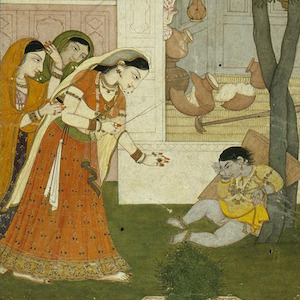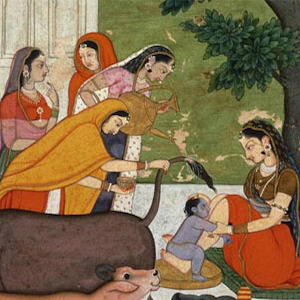Early Modern (1450 CE - 1800 CE)

The Great Man
German cartoonists tried to reduce Napoleon down to size, in this case, the size of mice! Here the mice serve as courtiers.

The Great Heroism of the Nineteenth Century
As in other caricatures, foreigners tried to humiliate Napoleon, once again using mice to represent those who would now attend him.

The Exorcism: Ridding France of the Devil Napoleon
The seal in the foreground, with its fleur–de–lys, indicates a return to royalism after France’s liberation from Napoleon. In addition, the secularism associated with the Revolution is countered with the image’s reference to the religious practice of exorcism.

His Monument: Napoleon's Past and Future Are FIlled With Dead Bodies
This Janus–like figuration of Napoleon haunts the viewer as it suggests a future filled with skulls. Indeed, the unprecedented deaths from war and conquest of the last two centuries make this image seem predictive.

Celebrating Napoleon's Birthday on the Island of St. Helena
In this cartoon, Napoleon is portrayed as a buffoon, riding a goat in a charge against rodents, mocking his warlike instincts.

Chinese Children at the Tjap Go Meh Festival in Makassar
This photograph, dated 1880, shows Chinese children in a procession in the Tjap Go Meh Festival in Makassar, the largest city on the Indonesian island of Sulawesi. Tjap Go Meh is a Chinese festival that takes place 15 days after the Chinese New Year and marks the beginning of spring.

Krishna Tied to a Mortar for Stealing Butter
Krishna is known in the stories of the Bhagavata-Purana as the 8th incarnation of the god Vishnu, destined to perform great deeds and remove the evils of the world.

Krishna Defeats the Whirlwind
Krishna is known in the stories of the Bhagavata-Purana as the 8th incarnation of the god Vishnu, destined to perform great deeds and remove the evils of the world.

Krishna and the Cremation of Putana
Krishna is known in the stories of the Bhagavata-Purana as the 8th incarnation of the god Vishnu, destined to perform great deeds and remove the evils of the world.

Liberty in the Form of the Goddess of Youth
Mary Green of Worcester, MA, created this embroidery in 1804 at the age of 16. She based it on the 1796 engraving, "Liberty in the Form of the Goddess of Youth Giving Support to the Bald Eagle," by artist-entrepreneur, Edward Savage (fig. 2).